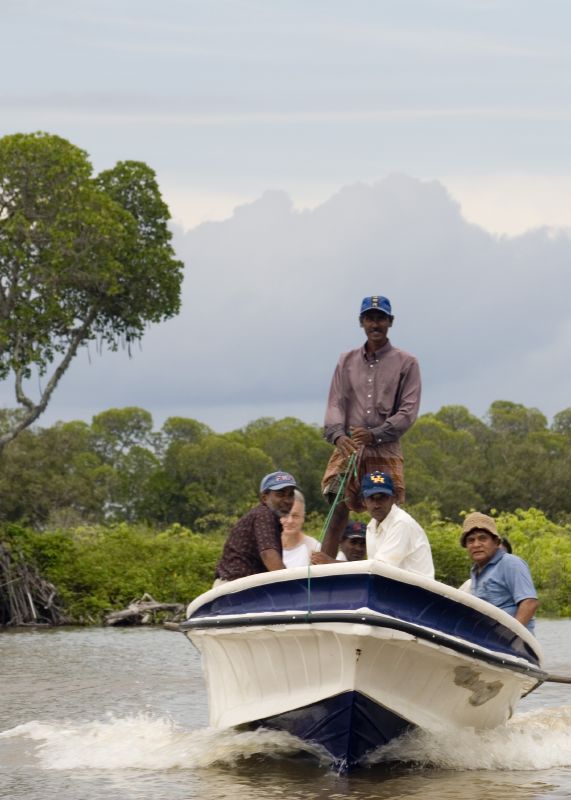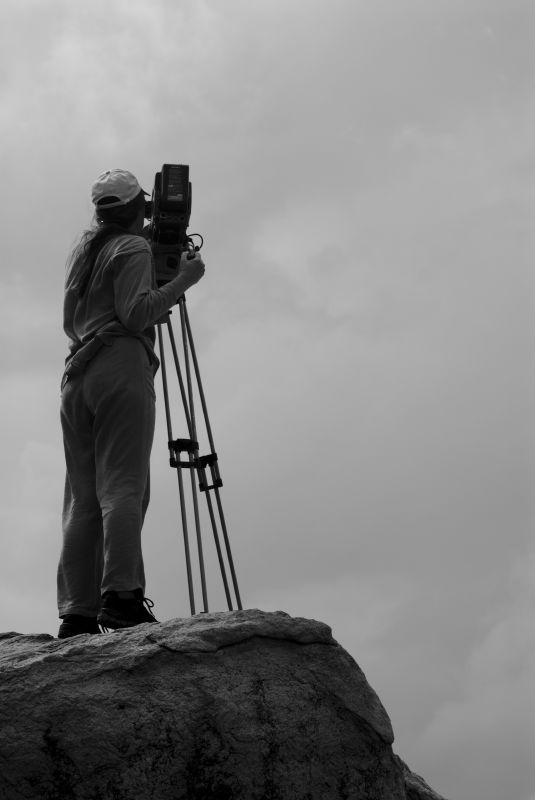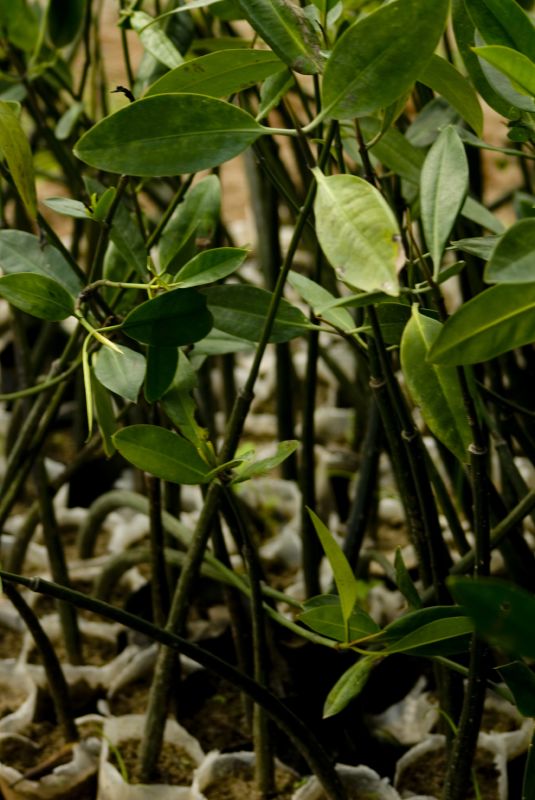Filming Mangroves
Used static caravans for sale yorkshire dales  Gayani, Dr. Lionel and I went east with Peter from Diokonie and Monfrie and Elke, filmmakers that Diokonie commissioned to do a short (very short, 5-10 minutes) documentary on the mangrove project in Panama. Click here to see an example of their previous work.
Gayani, Dr. Lionel and I went east with Peter from Diokonie and Monfrie and Elke, filmmakers that Diokonie commissioned to do a short (very short, 5-10 minutes) documentary on the mangrove project in Panama. Click here to see an example of their previous work.
Donors crack me up. Originally they were going to go with us in a Sewalanka vehicle. It is actually good for me that they chose to take their own vehicle, otherwise there would not have been room for me (or that is the story I would have been told, but you will see that this would not have actually been true). The reason for taking a separate vehicle is that Sewalanka’s vehicles were determined too uncomfortable. Sewalanka does actually have some very nice vehicles in their fleet, but only certain people have the pleasure of using those vehicles. Now the vehicle we used would have actually been slightly uncomfortable if everyone was in it as there are only air conditioning vents in the front and the only windows that open are at the front two rows of seats (it has four rows). Thus, those of us relegated to the back would be quite hot.
So it was actually reasonable that Diokonie wanted to use their own, fancy, white SUV. Unfortunately, these SUV’s not only suck up quite a bit of fuel, but are also very particular about their fuel. About half way to Arugambay they needed more petrol and apparently did not receive 100%. Thus, their vehicle could only go for 20 minutes and then it needed to rest for 30 minutes while the particles in the petrol settled. Well, Argumabay is very far away and it was decided this just wasn’t going to work, so everyone loaded up into the Sewalanka vehicle to finish out the trip. Magically I did not get left on the roadside for space considerations. I was (as implied above) relegated to the very back seat, by myself, with a pile of luggage. I don’t want to sound like a whiny foreigner, but I will anyway. I do have this torn disk in my neck so it is really starting to irritate me that I always end up in the back seat. This means I get the brunt of the bouncing and these roads are not smooth by any stretch of the imagination. So my neck really, really hurt all week long (it is better today, so maybe I didn’t do any permanent damage).
Anyway, we made it to Arugambay and Ranga had some string hoppers waiting for us (Ranga runs the Beach Hut, which is basically where all NGO and INGO staff stay when in Arugambay as he is the best cook around). This made me happy even though it had taken us 14 hours to get to Arugambay. I’m regularly told it takes seven, but I have never made it in seven. I knew it would take a little longer due to the increased security and we added some time with the SUV issues, but still, twice as long!
 The film crew had very specific ideas of what they wanted to capture, which is good because otherwise we would have wasted a lot of time seeing little pet projects of Dr. Lionel. Anyway, first order of business was to get to Panama, where the project takes place. This is the village next to Arugambay, so not a major feat, except the lagoon had flooded due to the recent rains and the road was washed out. Flooded to the exact height of the wheel of our Sewalanka vehicle, which unlike the fancy INGO white SUVs does not have the plastic tubbing on the tailpipe so that you can drive through water. Thus, we put the car in neutral and pushed it about half a kilometer to the other side of the lagoon. When I say we, I mean our driver (Pyas — in picture
The film crew had very specific ideas of what they wanted to capture, which is good because otherwise we would have wasted a lot of time seeing little pet projects of Dr. Lionel. Anyway, first order of business was to get to Panama, where the project takes place. This is the village next to Arugambay, so not a major feat, except the lagoon had flooded due to the recent rains and the road was washed out. Flooded to the exact height of the wheel of our Sewalanka vehicle, which unlike the fancy INGO white SUVs does not have the plastic tubbing on the tailpipe so that you can drive through water. Thus, we put the car in neutral and pushed it about half a kilometer to the other side of the lagoon. When I say we, I mean our driver (Pyas — in picture testing depth of water) Peter, the film crew and myself. Yep, Dr. Lionel did not help. I wasn’t so surprised that Gayani didn’t as women in Sri Lanka [warning: enormous generalization about to be written] tend to go the frail route, but Dr. Lionel is not so old that he couldn’t try to be some assistance. Afterwards, and yes I am terribly offended by this statement, Dr. Lionel said he now knows what help I can provide on trips to the east — I can push the car. I have to say I’ve just about had it with this man!
testing depth of water) Peter, the film crew and myself. Yep, Dr. Lionel did not help. I wasn’t so surprised that Gayani didn’t as women in Sri Lanka [warning: enormous generalization about to be written] tend to go the frail route, but Dr. Lionel is not so old that he couldn’t try to be some assistance. Afterwards, and yes I am terribly offended by this statement, Dr. Lionel said he now knows what help I can provide on trips to the east — I can push the car. I have to say I’ve just about had it with this man!
Anyway, we got to Panama and looked in on the nursery. There were two boats to take us to see the mangroves being replanted on the lagoon. We loaded up film equipment and people and headed out. The film crew were rather funny because they were clearly getting exasperated with people not following directions. I find this funny because it isn’t that people are trying to be irritating, but understanding English with thick German accents when English is your second or in some cases third language, is difficult. Anyway, they got what they wanted on the boats and we went to see the ladies planting.
 In Panama the planting is done mostly by women. In the other village we went to (without film crew), the men do the planting. The difference — Panama is Sinhala and the other village is Tamil. Anyway, they filmed the ladies planting and interviewed them.
In Panama the planting is done mostly by women. In the other village we went to (without film crew), the men do the planting. The difference — Panama is Sinhala and the other village is Tamil. Anyway, they filmed the ladies planting and interviewed them.
I am a little worried I somehow irritated the filmmakers. Once we hit land we were standing around and they were setting up so I was taking photos. When they were done setting up I walked away from the group and just stood there, trying to stay out of the way. Anyway, Elke was telling everyone to be quiet for the filming and then she singled me out and said, “Jessica, no photos.” Not in a mean way (although Germans do have a hard time sounding nice), but I still felt like I missed something. Every time on the boat when they began filming I stayed quiet and I sat on their boat just so their film wouldn’t have me in it. I mean I was working very hard at staying behind the scenes and not getting in the way. There is the possibility that she mentioned me by name because she could remember my name and it was clear she was having problems with the Sinhala names (I totally understand as I’m awful with names too).

Anyway, they got their interviews and film and we went down to another planting location and filmed another group of women.
Then they wanted to climb this rock to get a nice overview of the scene. This took an extraordinary amount of time, but I assume it was successful. We went back into the village for lunch (it was around 4 p.m. by this point so we were starving) and they set up a little community meeting to be filmed. I sat inside the house to stay out of the shot, so I can’t provide specifics of the meeting, but it sounded from inside like they were really discussing things (although it was technically a fake meeting, just organized for the filming).
The village kindly offered a tractor to pull us back across the lagoon. The following day the village broke through the lagoon wall that separates the lagoon from the ocean and let the extra water flow out to sea. Elke and Monfrie told us that night that once the water was released they counted eight crocodiles sitting in the lagoon. The lagoon we walked through the day before pushing a car!
 On Wednesday the filmmakers wanted to go back to Panama and film in the village, but Dr. Lionel really wanted Peter to see the other village. So we broke up — I went with Peter and Dr. Lionel. Gayani did not drink enough the day before (hydrate or die people!) and thus was in bed all day with a headache. This was a problem as she was sort of the star of the film the day before, explaining things, translating, etc. and without her this meant a hole in the film. Anyway, apparently the dealt with it o.k. and it all worked out on their end.
On Wednesday the filmmakers wanted to go back to Panama and film in the village, but Dr. Lionel really wanted Peter to see the other village. So we broke up — I went with Peter and Dr. Lionel. Gayani did not drink enough the day before (hydrate or die people!) and thus was in bed all day with a headache. This was a problem as she was sort of the star of the film the day before, explaining things, translating, etc. and without her this meant a hole in the film. Anyway, apparently the dealt with it o.k. and it all worked out on their end.
In the Tamil village the mangrove plants in the nursery were much healthier and way taller. No one could explain why this was (Peter asked a couple of times and people acted as if they did not understand him). The fishermen prepared two small boats for us and we rowed down the lagoon in the rain. I don’t think Pieter really felt this was necessary, and as these were boats fashioned after traditional boats — read extremely small, it was not the most comfortable ride. I enjoyed it because without a motor we were able to see many birds. Of course, it was raining, so no photos were taken.
When we got back to shore there was a traditional wooden boat sitting on the ground and all the fishermen told us how much better that type of boat was compared with the fiberglass boats they all use now that were given to them by various INGOs (names stamped on the side just so we know who gave what). So I asked, how they used to acquire their boats and they answered that they made them. I don’t understand this. It has been almost three years since the tsunami — if they don’t like the boats they were given, why haven’t they replaced them with the type they used to make for themselves anyway. Not to mention that the shoreline is littered with these old wooden boats and some of them are still seaworthy. The real problem is that the tsunami relief process has created a serious problem in Sri Lanka — now everyone just expects whatever they want to be handed to them. It really is a huge problem. I don’t even work for an INGO, yet every time I go to Arugambay someone asks me for something. Generally it is not a necessity and usually the person asking is absolutely not in need (I imagine some of the hoteliers most likely make more money than me).
O.k. end of tirade (for now). Gayani and I were supposed to return to Colombo on Wed., but because filming was not completed on Tuesday, we stayed an extra day. We got back to Arugambay early Wednesday afternoon and Peter thought he’d get to write a few e-mails, but Dr. Lionel would not stop talking to him. Luckily, cell phones were turned back on at some point and this kept Dr. Lionel busy for a bit, so hopefully Peter got some work done.
Yep, in response to the attack in Yala the government turned off all cell phone coverage in the east. Because I’m sure cell phones are the Tigers only means of communication. Phone service was disabled for two weeks, but if you ask anyone in the east they will say they had no phones for one to two months, depending on the person. I found the lack of coverage blissful, but I guess if I had to deal with it for the full two weeks I would not have been as happy.
Thursday we drove back to Colombo. For some reason, Dr. Lionel felt we should all travel together until the turn off to Andurandapuran. Dr. Lionel decided he would accompany the Germans to see another project they are funding. We were all invited, but there wasn’t space in their vehicle for another person and Gayani wasn’t interested in going, so I didn’t go either. I’m not sure why, but Dr. Lionel rode with us until the turn-off. I think it was just to not allow me the front seat in the car as long as possible. Clearly I have issues.
Purchase xalatan generic name Around 2 p.m., long after deserting the Germans, we started to look for food. My thoughts on food while you travel here are that you eat what you can find. Gayani wanted rice and curry and you would think this wouldn’t be a problem, yet it was. Many places only had fried rice and this, apparently, was unacceptable. So we didn’t eat until 3 when we found some rice and curry for Gayani. I have to say that Gayani isn’t the easiest person to travel with what with the preventable sickness and the picky eating habits.
And now I’m back in Boralesgamuwa. Today was basically uneventful. Harshana finally got his visa to England (he was supposed to leave Sunday, but has now rescheduled to Tuesday). I am really happy for him, but a little sad because if he hadn’t received the visa we would be using the grant money to go to Bali to study community based tourism there. Since England is so expensive the grant that was for two will only be used for one and I’m left in the cold. At least in this case I agree as Harshana did have far more to do on the Arugambay project than I and thus should reap the rewards. He promised to bring me a jar of lemon curd so I’ll be happy with that.
source:
http://expatwithelephants.blogspot.com/2007/11/filming-mangroves.html
 Arugam Forum
Arugam Forum Arugam Photo Galleries on Picasa
Arugam Photo Galleries on Picasa Old Website
Old Website Press Coverage
Press Coverage Surf Forecast for Arugam Bay
Surf Forecast for Arugam Bay
Hey There. I found your blog using msn. This is a really well written article.
I will be sure to bookmark it and return to read more of your
useful info. Thanks for the post. I will definitely comeback.